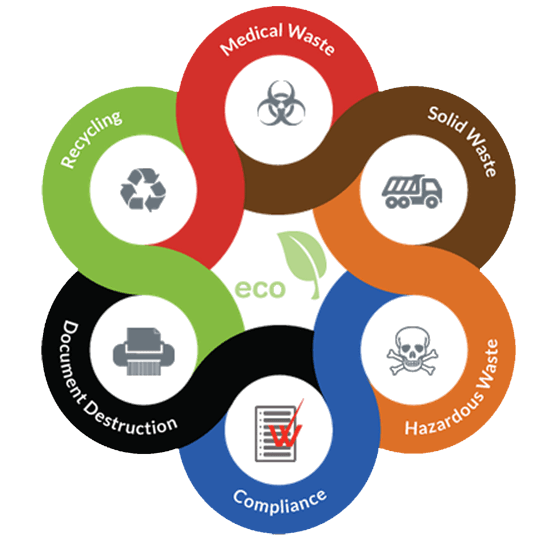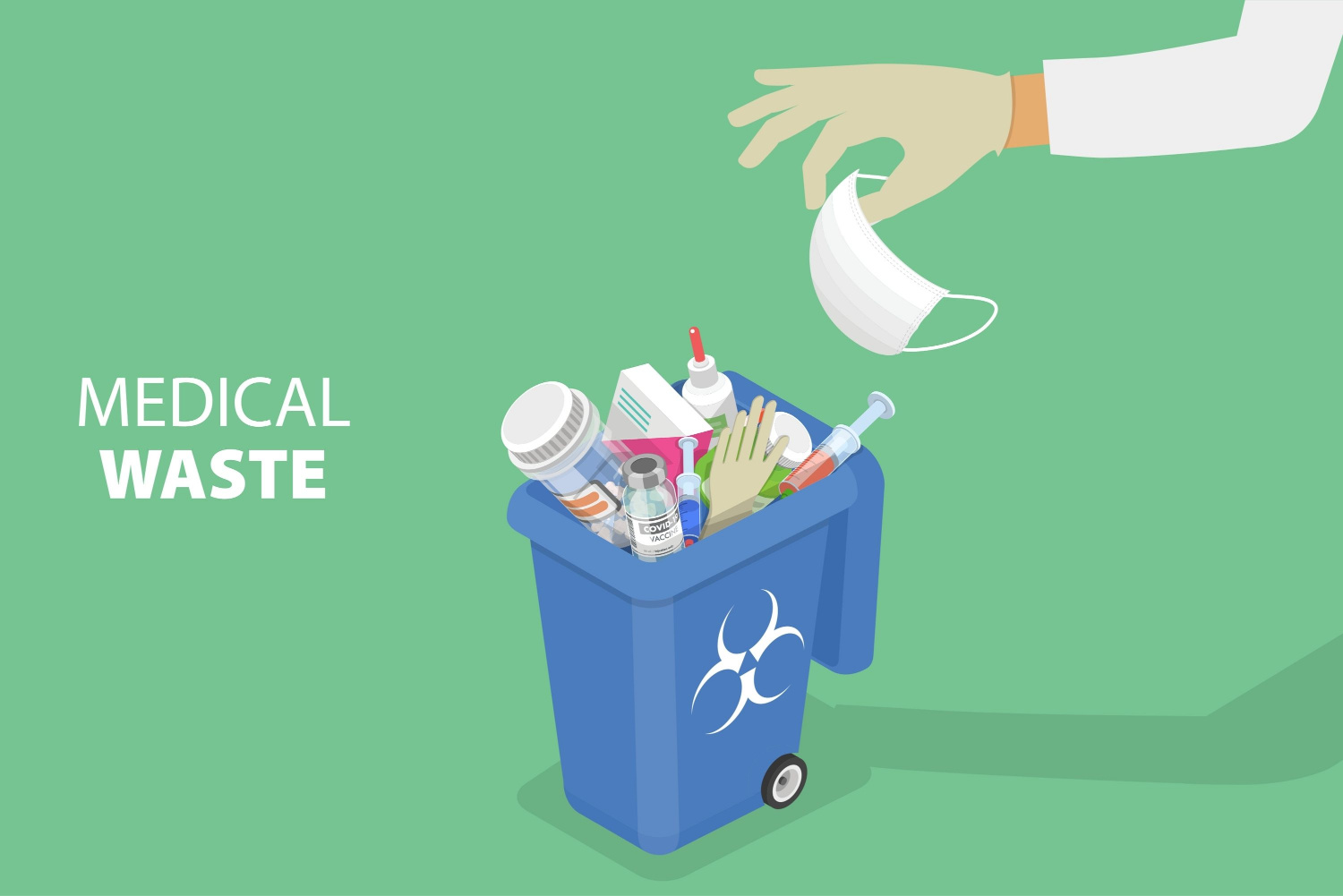Compliant and Reliable Medical Waste Removal Service: Partnering for a Cleaner Future
Wiki Article
Conformity and Rules for Medical Waste Disposal
Compliance and guidelines for medical garbage disposal play an essential role in making certain the safety and security and health of both healthcare professionals and the public. Correct monitoring of clinical waste is necessary to stop the spread of infections, safeguard the environment, and keep public wellness. This calls for adherence to specific guidelines and protocols established forth by regulative firms and bodies. These regulations encompass different aspects, including the category and segregation of clinical waste, correct storage and taking care of procedures, along with transportation and disposal techniques. By adhering to these policies, medical care centers can reduce the threat of contamination and potential harm to people and the setting. This article will certainly explore the significance of conformity and provide a summary of the vital regulations governing medical garbage disposal.Value of Conformity
The significance of conformity with guidelines for clinical garbage disposal can not be overemphasized. Correct disposal of clinical waste is important for guaranteeing the safety and well-being of healthcare employees, individuals, and the basic public. Medical waste, which consists of things such as made use of needles, contaminated handwear covers, and biomedical waste, can posture serious health threats if not dealt with and taken care of appropriately.Compliance with guidelines guarantees that clinical waste is handled in a manner that minimizes the possibility for direct exposure to contagious conditions and hazardous substances - medical waste removal. It helps avoid the spread of infections, such as HIV, liver disease B and C, and various other bloodborne virus. Conformity also plays an important role in shielding the setting by stopping contamination of water sources, dirt, and air
Failure to adhere to policies can cause serious consequences for medical care facilities, including penalties, legal action, and damage to their credibility. Furthermore, non-compliance may compromise the wellness and security of medical care employees, clients, and the area.
Compliance with guidelines for clinical waste disposal calls for adherence to specific guidelines and methods. These may include correct segregation, packaging, labeling, and storage space of clinical waste. It also includes making use of approved disposal approaches, such as landfilling, incineration, or autoclaving, depending upon the sort of waste.
Governing Agencies and Bodies
Regulatory companies and bodies play a critical role in supervising conformity with laws for clinical waste disposal. These companies are in charge of setting standards, methods, and criteria to guarantee the proper and secure handling of clinical waste. They apply and check conformity to shield public wellness and the atmosphere.Among the most popular regulatory agencies in the United States is the Environmental Protection Agency (EPA) The EPA is liable for managing the storage, transport, therapy, and disposal of medical waste. They develop guidelines for waste generators, transporters, and therapy centers to adhere to, guaranteeing that all necessary preventative measures are taken to stop the spread of diseases and contamination.
One more important regulatory body is the Occupational Safety And Security and Health And Wellness Management (OSHA) OSHA sets regulations and requirements to protect workers from work-related threats, consisting of those pertaining to medical waste. WasteX Medical Waste Disposal. They supply standards for the safe handling and disposal of medical waste to secure staff members in healthcare centers
In addition to these government agencies, specific states also have their very own regulatory bodies that look after medical garbage disposal. These firms may have their very own specific guidelines and needs that need to be followed.

Category and Segregation of Clinical Waste
To ensure appropriate monitoring of clinical waste, it is vital to identify and segregate it according to established protocols and guidelines. medical waste removal service. Classification and segregation play a crucial role in lessening the risk of infection, safeguarding the atmosphere, and ensuring the safety of health care employees and the basic publicClinical waste is identified into different classifications based upon its possible hazard level. These classifications include contagious waste, pathological waste, sharps waste, pharmaceutical waste, chemical waste, and contaminated waste. Each group calls for details handling, transport, storage space, and disposal approaches to decrease the danger of exposure and contamination.
Segregation of medical waste involves separating various kinds of waste at the resource. This procedure makes certain that waste with various danger degrees is not combined, lowering the possibility for cross-contamination and making disposal treatments a lot more effective. Appropriate segregation is achieved through making use of color-coded containers and tags, which help medical care employees and waste management personnel manage each type and identify of waste correctly.
In enhancement to classification and partition, medical care centers should also abide by neighborhood, state, and federal regulations regarding clinical waste administration. These regulations outline details requirements for storage space, transport, treatment, and final disposal of clinical waste, making sure compliance and keeping public wellness and security.
Proper Storage and Taking Care Of Treatments
Appropriate storage space and managing treatments play a vital duty in guaranteeing the risk-free and compliant administration of clinical waste. Medical waste, that includes items such as made use of syringes, polluted gloves, and ran out medicines, can pose significant health and wellness and environmental dangers otherwise taken care of appropriately. As a result, it is important for healthcare centers and other generators of clinical waste to execute rigorous storage and taking care of methods.
To start with, medical waste must be saved in long lasting, watertight containers that are particularly made for this purpose. These containers must be labeled with the universal biohazard icon and the words "medical waste" to plainly indicate the components. In addition, the containers ought to be maintained securely closed to protect against any prospective leak or spillage.
Additionally, it is essential to segregate different sorts of medical waste to avoid cross-contamination. Sharps, such as scalpels and needles, should be stored in puncture-resistant containers to lessen the threat of injuries - WasteX Medical Waste Disposal. Chemical waste, such as anti-bacterials and solvents, should be stored separately from other kinds of medical waste to stop chain reactions or unsafe direct exposures

Transport and Disposal Techniques
Healthcare centers have to make sure the safe transport and correct disposal of their medical waste to follow laws and protect public wellness. Transport and disposal techniques play an essential role in protecting against the spread of contagious diseases and decreasing the environmental impact of clinical waste.
To transfer clinical waste, health care facilities should make use of leak-proof and puncture-resistant containers that are identified with the biohazard icon. These containers ought to be securely sealed to prevent any type of leakage throughout transport. Furthermore, medical care centers must establish protocols for the transport process, including the usage of qualified employees and devoted automobiles.
As soon as the medical waste reaches the disposal center, it undergoes different approaches of treatment. One typical approach is incineration, which involves shedding the waste at high temperature levels to destroy microorganisms and lower the quantity of waste. An additional method is autoclaving, which utilizes vapor and pressure to sanitize the waste. After therapy, the waste is typically sent to a garbage dump or a waste-to-energy center for last disposal.
It is essential for healthcare facilities to deal with licensed and see this page allowed waste administration business to guarantee appropriate transportation and disposal of clinical waste. These business have the proficiency and resources to manage medical waste safely and in compliance with laws.
Final Thought
Finally, conformity with policies for medical waste disposal is of utmost significance to ensure public health and wellness and security. Regulatory agencies and bodies play an essential role in enforcing these laws. Appropriate classification and segregation of clinical waste, in addition to following appropriate storage space and managing procedures, are vital to stop contamination and the spread of conditions. Sufficient transportation and disposal approaches need to be executed to minimize ecological impacts. On the whole, adherence to conformity and regulations is essential to efficiently manage clinical waste.Medical waste, which includes products such as made use of needles, polluted handwear covers, and biomedical waste, can position significant health dangers if not handled and disposed of appropriately.
These categories include transmittable waste, pathological waste, sharps waste, pharmaceutical waste, chemical waste, and radioactive waste.Segregation of clinical waste entails separating different types of waste at the resource. Correct segregation is accomplished via the use of color-coded tags and containers, which help health care workers and waste administration employees identify and manage each type of waste properly.
Chemical waste, such as solvents and anti-bacterials, should be kept individually from various other kinds of clinical waste to prevent unsafe exposures or chemical responses.
Report this wiki page